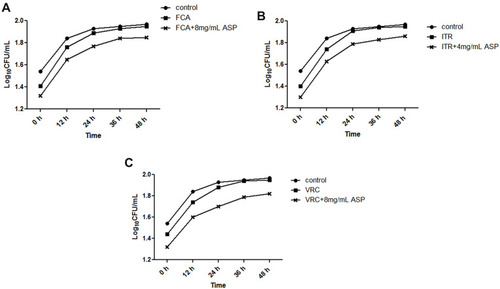Figures & data
Table 1 The Clinical Features of the Patients Where the Strains Were Isolated
Table 2 The Values of Minimum Inhibitory Concentration (MIC50) Under Planktonic Conditions When Aspirin (ASA) and Fluconazole (FCA) Were Used
Table 3 The Values of Minimum Inhibitory Concentration (MIC50) Under Biofilm Conditions When Aspirin (ASA) and Fluconazole (FCA) Were Used
Table 4 The Interactions Between Aspirin (ASA) and Fluconazole (FCA), Itraconazole (ITR) or Voriconazole (VRC) Under Different Conditions


